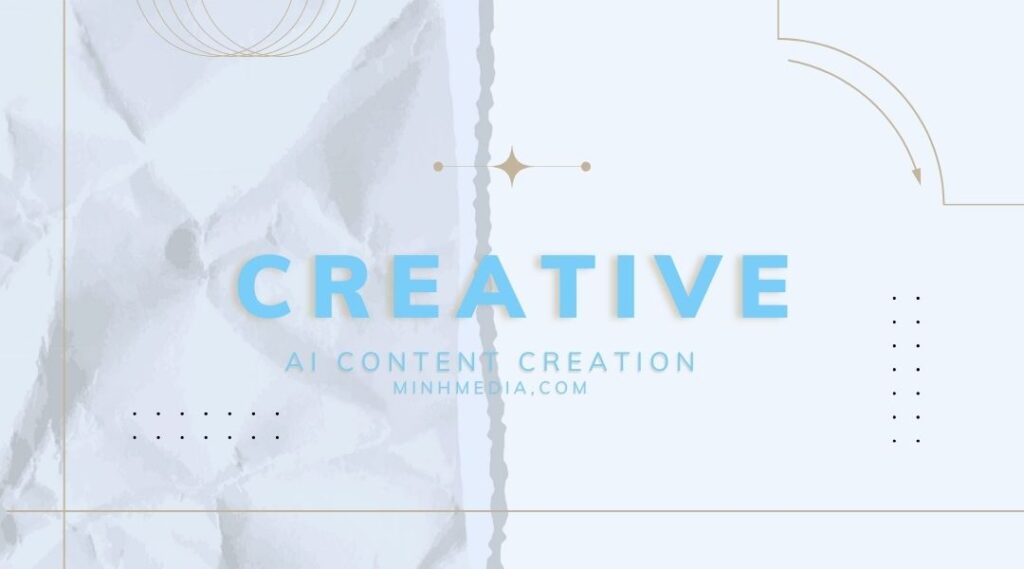Introduction:
AI Content Creation: The Future of Efficient and Scalable Content
Artificial intelligence (AI) has revolutionized numerous industries, with content creation being one of the most profoundly impacted areas. By leveraging AI, businesses and content creators can now generate high-quality, SEO-optimized content more efficiently than ever before. In 2024 and beyond, AI content creation is set to shape the future of digital marketing, creating opportunities for personalization, scalability, and data-driven strategies.
This guide will provide a comprehensive understanding of how businesses and creators can use AI for content creation to stay competitive in the evolving digital landscape.
What is AI Content Creation?
AI content creation refers to the use of artificial intelligence to generate written, visual, and audio content. The technology utilizes machine learning algorithms, natural language processing (NLP), and generative models like GPT (Generative Pre-trained Transformer) to produce content that mimics human writing styles and creativity.

- Mechanics of AI Content Creation: AI models analyze vast datasets to learn language patterns, styles, and contexts. Tools like ChatGPT, Jasper AI, and Copy.ai generate human-like text, while platforms such as DALL-E and MidJourney create visuals. AI is also used for generating videos, audio content, and even personalized email copy.
- Benefits: AI’s ability to create content at scale makes it invaluable for businesses looking to meet increasing demand. Its speed, consistency, and ability to personalize content based on user data are significant advantages. However, there are challenges, such as creativity limitations and ethical concerns.
Best AI Content Tools in 2024
As AI continues to evolve, numerous tools have emerged to aid in the content creation process:

- Text-Based Tools:
- Jasper AI: Specializes in creating long-form content with personalized recommendations.
- Copy.ai: Known for generating short-form content such as ads and social media captions.
- Writesonic: Offers both long and short-form content creation, focusing on SEO.
- Visual Tools:
- DALL-E: Generates unique images based on textual prompts.
- MidJourney: Excels in creating artistic and visually stunning images.
- RunwayML: A machine-learning platform for creators that assists with image, video, and audio generation.
- Audio/Video Content Tools:
- Descript: A powerful tool for audio and video content generation, particularly for podcasts and videos.
- Synthesia: Generates AI avatars for video content.
- Resemble AI: Focuses on creating lifelike voiceovers using AI.
- Use Cases: These tools have numerous business applications. For instance, Jasper AI is popular for blog writing, while DALL-E is used for generating creative visuals for marketing campaigns.
AI Content Creation for Different Formats
AI tools are versatile and can create various types of content:
- Blogs and Long-Form Articles: AI tools generate SEO-optimized long-form articles that can help businesses scale their content efforts. Platforms like Surfer SEO integrate with AI tools to ensure high SERP rankings.
- Social Media Posts: AI-generated content can streamline social media marketing by creating engaging, relevant posts tailored to specific audiences. Tools like Buffer and Hootsuite automate posting schedules using AI.
- Email Marketing: AI enhances email marketing through personalization. AI tools can generate personalized email campaigns that increase open and click-through rates.
- Videos and Podcasts: AI simplifies video creation by helping with editing, scripting, and even voiceover. Synthesia creates AI-powered avatars, while Descript allows users to edit videos like text.
How AI Enhances Creativity and Personalization
AI is not just about automation—it also enhances creativity:

- Personalized Content: AI analyzes user data to personalize content in real-time. For example, AI tools can customize email campaigns based on user behavior, offering dynamic content tailored to individual preferences.
- Creative AI Use Cases: Tools like RunwayML allow users to generate creative video content through simple prompts, while ChatGPT assists writers in brainstorming ideas, overcoming writer’s block, and refining drafts.
AI in SEO and Content Optimization
AI-driven content optimization is transforming SEO:
- AI for Keyword Research: Tools like Clearscope and Surfer SEO analyze top-ranking content to suggest keywords and content improvements that align with user intent. This allows content creators to optimize their posts for better search engine rankings.
- Content Gap Analysis: AI analyzes competitor content, highlighting gaps and opportunities for improvement. This data-driven approach ensures that content meets SEO standards and satisfies user queries.
- Improving Content Rankings: Using AI tools, content creators can refine their work to meet Google’s “helpful content” guidelines, ensuring a higher likelihood of ranking on the first page.
AI in User-Generated Content (UGC)
AI has also started playing a role in curating user-generated content:

- Optimizing UGC: AI helps analyze and filter through massive amounts of UGC, ensuring that only the most relevant content is published. This is particularly useful for brands running social media campaigns.
- Case Studies: Brands like Coca-Cola and GoPro have successfully used AI to curate and amplify UGC, enhancing brand authenticity and engagement.
Challenges and Ethical Considerations in AI Content Creation
While AI brings many benefits, it also poses certain challenges:

- Ethics in AI Content: AI-generated content can raise ethical concerns such as plagiarism, misinformation, and lack of originality. Content creators must ensure that AI-generated content adheres to ethical standards.
- Bias in AI: AI can perpetuate biases present in training data, leading to non-inclusive or discriminatory content. Companies should take steps to mitigate bias in AI-generated content.
Future Trends in AI Content Creation
The future of AI content creation is promising:
- Generative AI Advancements: With the continuous evolution of GPT models (such as GPT-5), AI tools will become even more proficient at generating human-like content.
- Multimodal AI: The future of AI lies in combining text, video, and audio content generation within a single platform. This could revolutionize how brands create multimedia content.
- AI for Real-time Personalization: As AI technology improves, real-time dynamic content personalization will become more common, allowing businesses to deliver hyper-targeted content experiences to users.
How to Implement AI Content Creation in Your Business
To successfully integrate AI into content strategies, businesses should:
- Choose the Right Tools: Evaluate AI tools based on the type of content you create and the specific needs of your industry.
- Integrate with Existing Marketing Technologies: Seamlessly incorporate AI tools with marketing platforms like HubSpot or Salesforce for a unified strategy.
- Measure ROI: Track the performance of AI-generated content using metrics like conversion rates, engagement, and SEO rankings to assess its effectiveness.
Conclusion: The Future of AI Content Creation
AI content creation has transformed the way businesses produce and distribute content. It offers scalability, personalization, and optimization, helping brands meet the demands of modern digital marketing. As AI continues to advance, the possibilities for content creation are endless.
Now is the time for businesses to explore how AI can enhance their content strategies, ensuring that they remain competitive in the digital space.
FAQs
- What is AI content creation? AI content creation uses machine learning and NLP to generate text, images, and audio.
- What are the best AI content tools? Tools like Jasper AI, ChatGPT, and DALL-E are popular for text, image, and audio generation.
- Can AI content be personalized? Yes, AI can personalize content based on user behavior and preferences.
- Are there any ethical concerns with AI content? Yes, ethical concerns include plagiarism, bias, and misinformation, which businesses must address when using AI.

